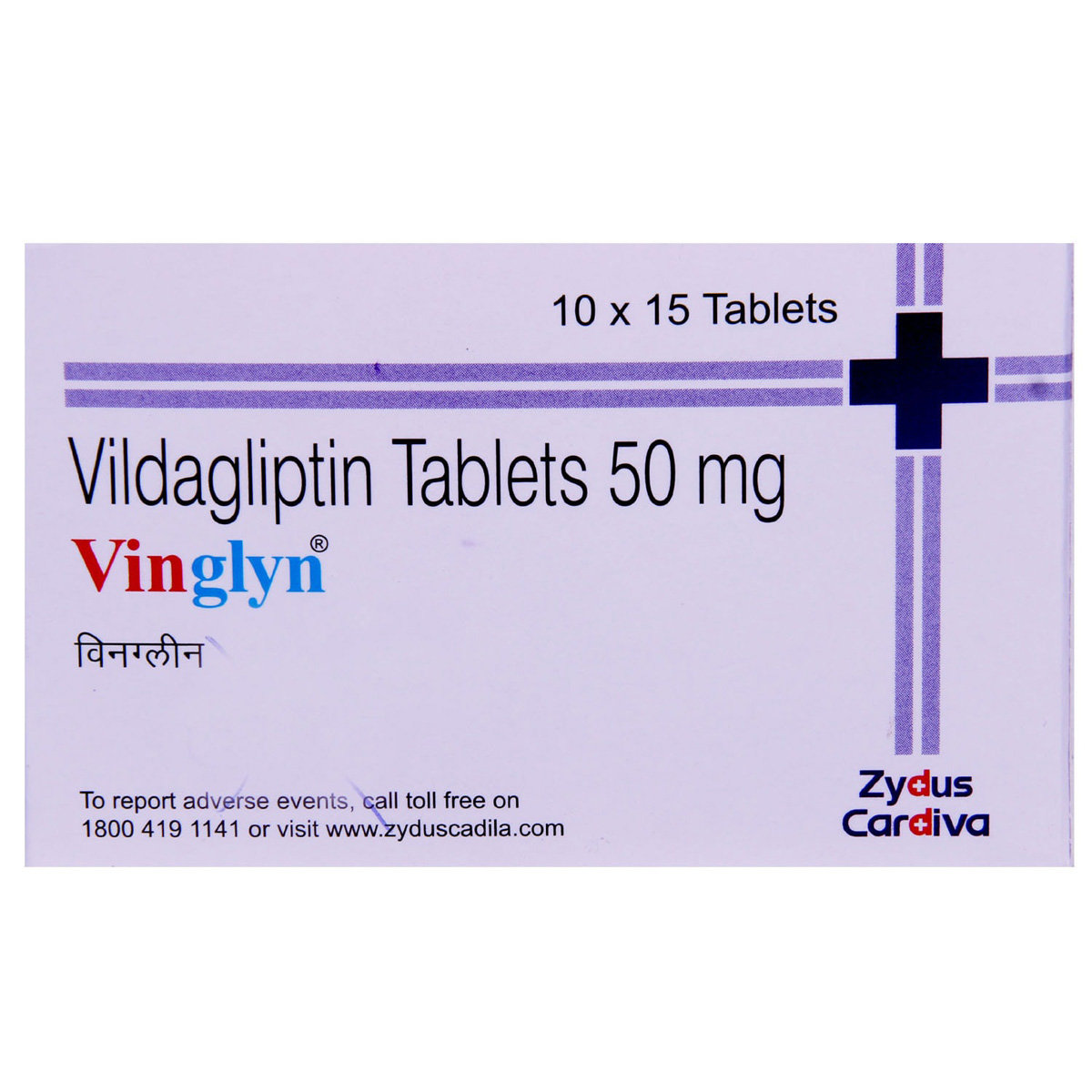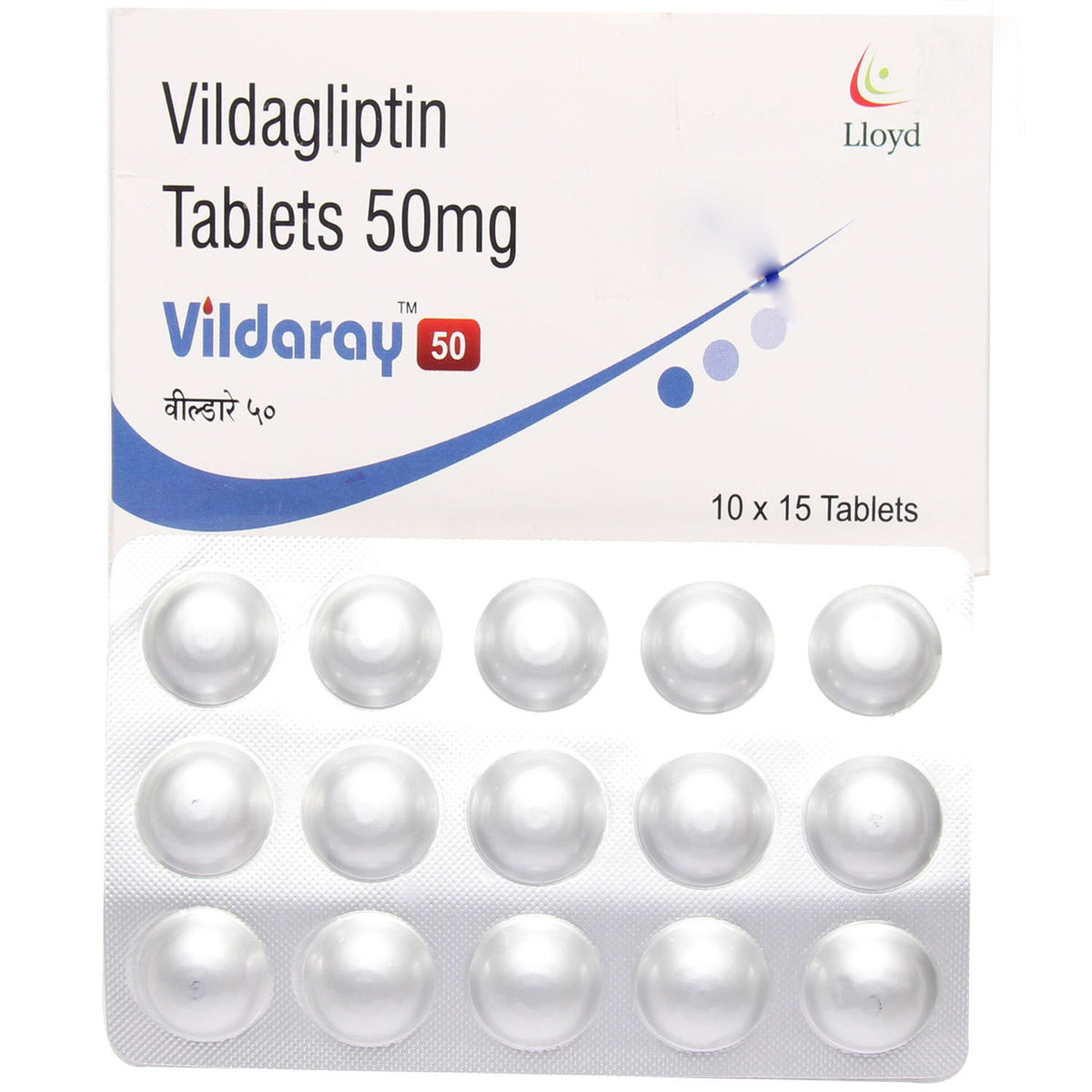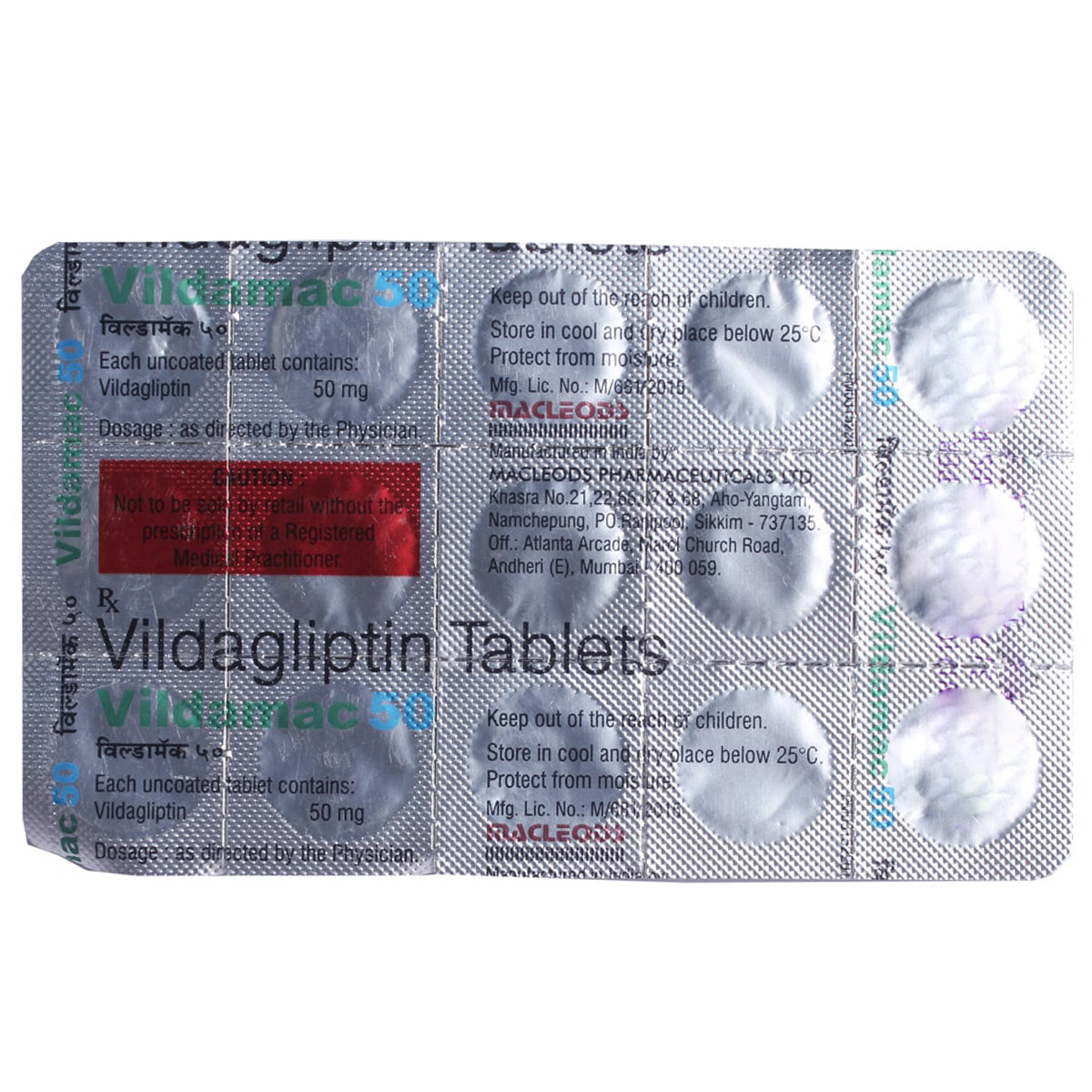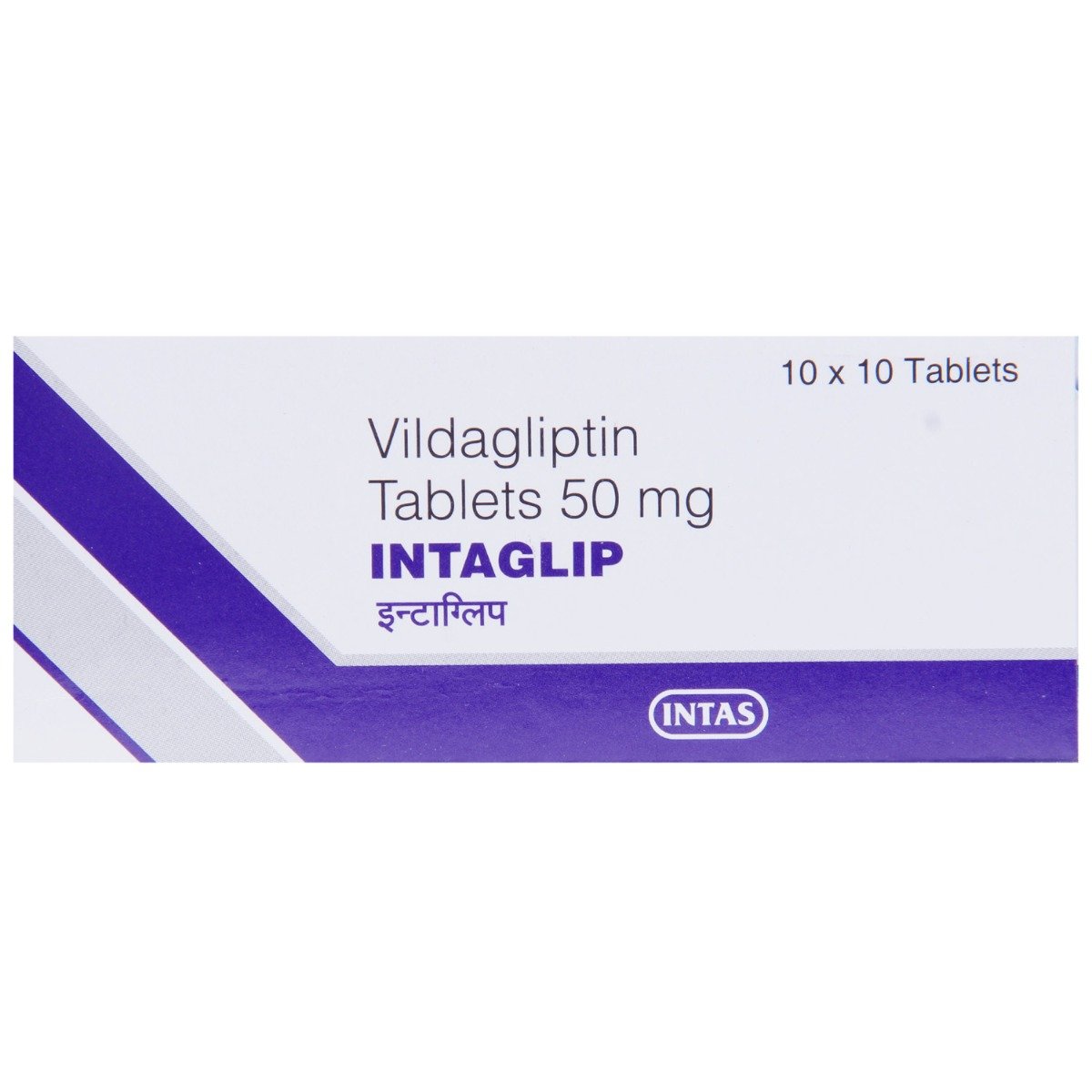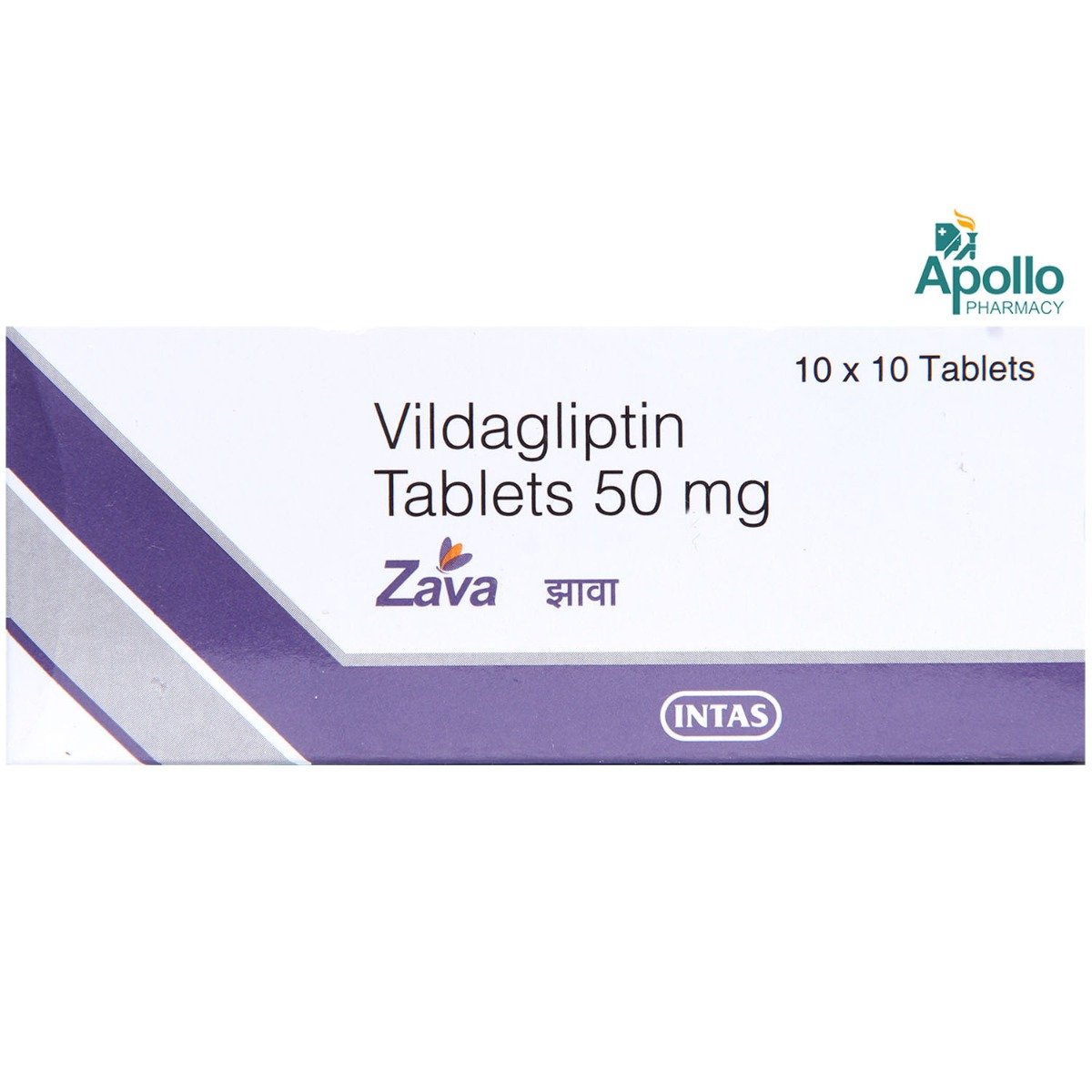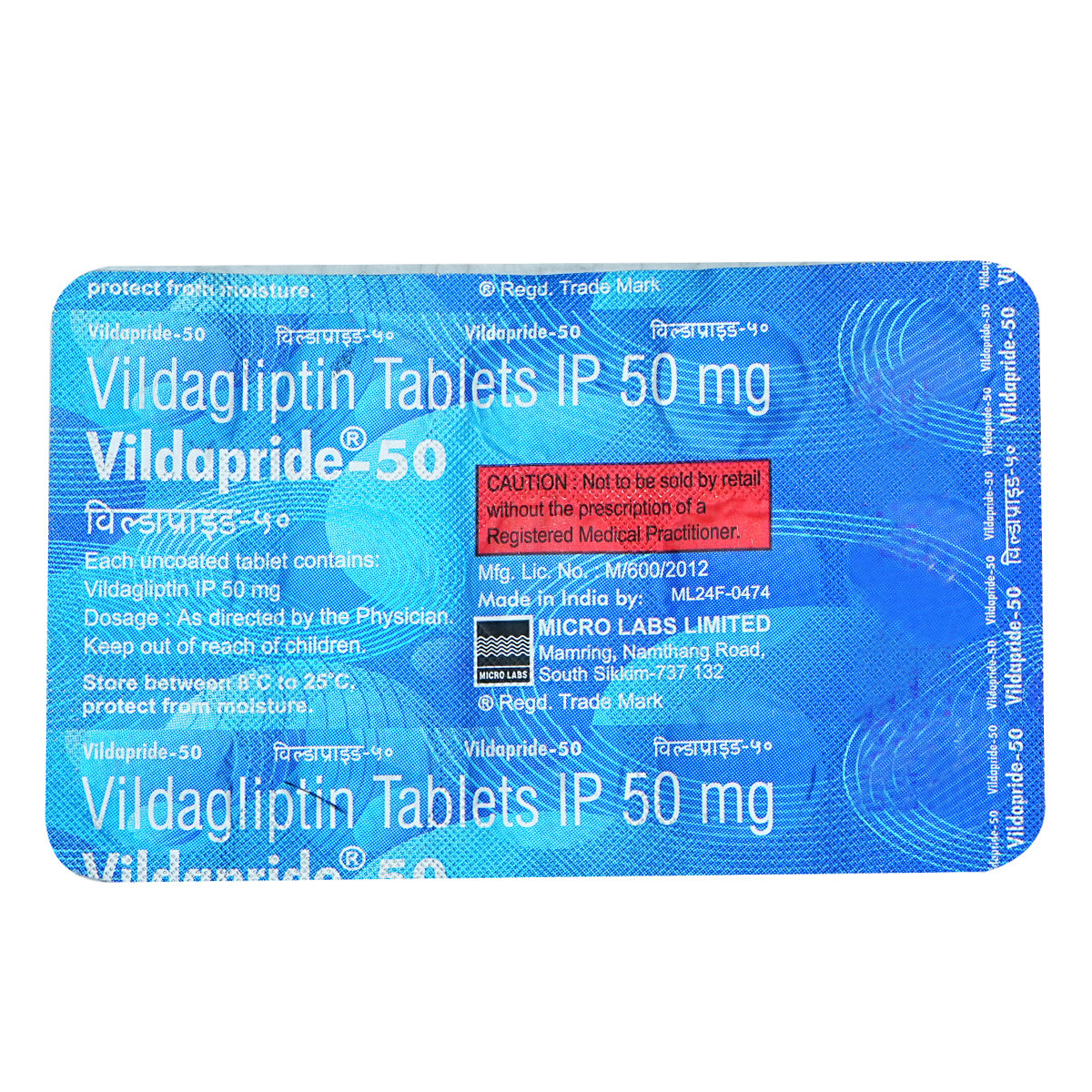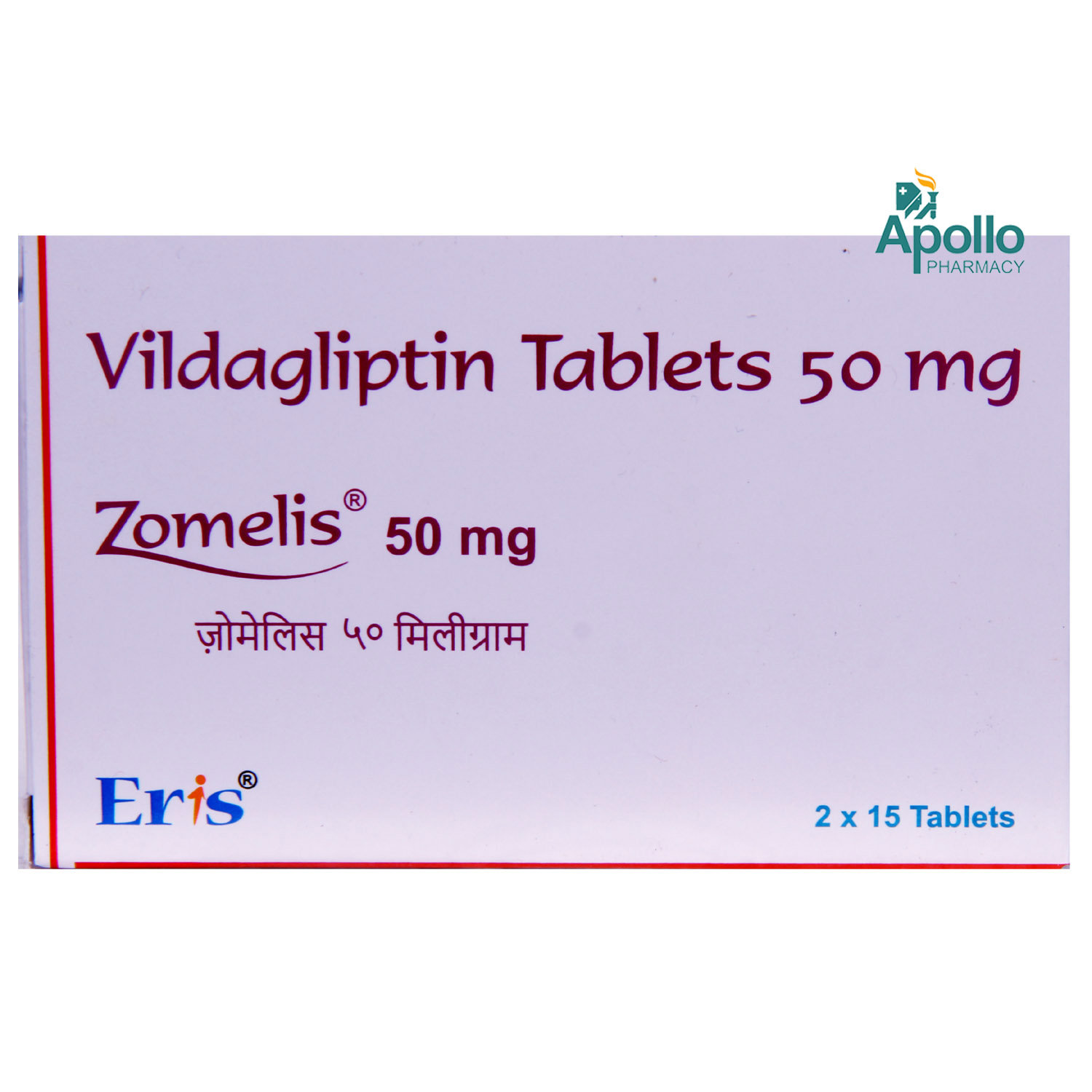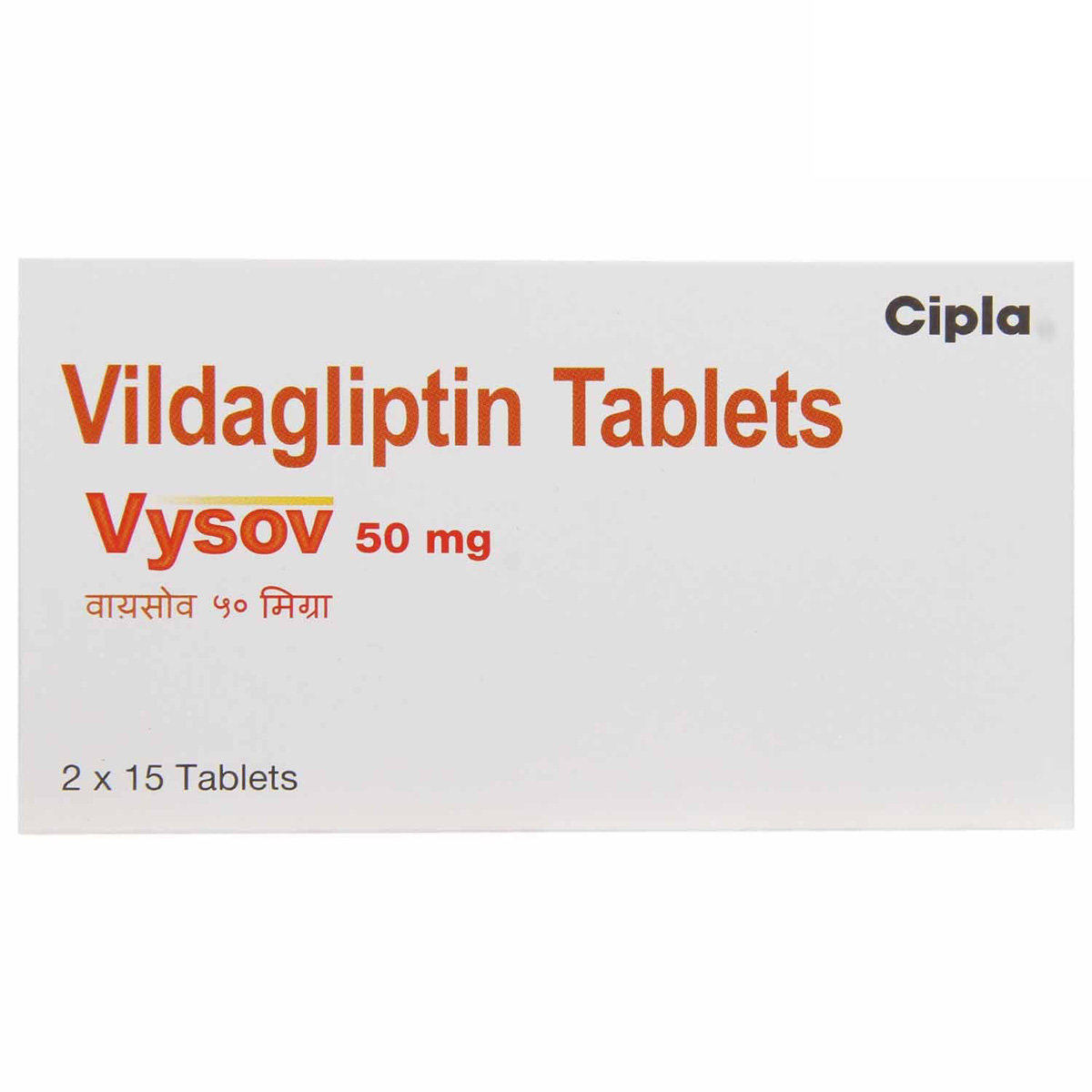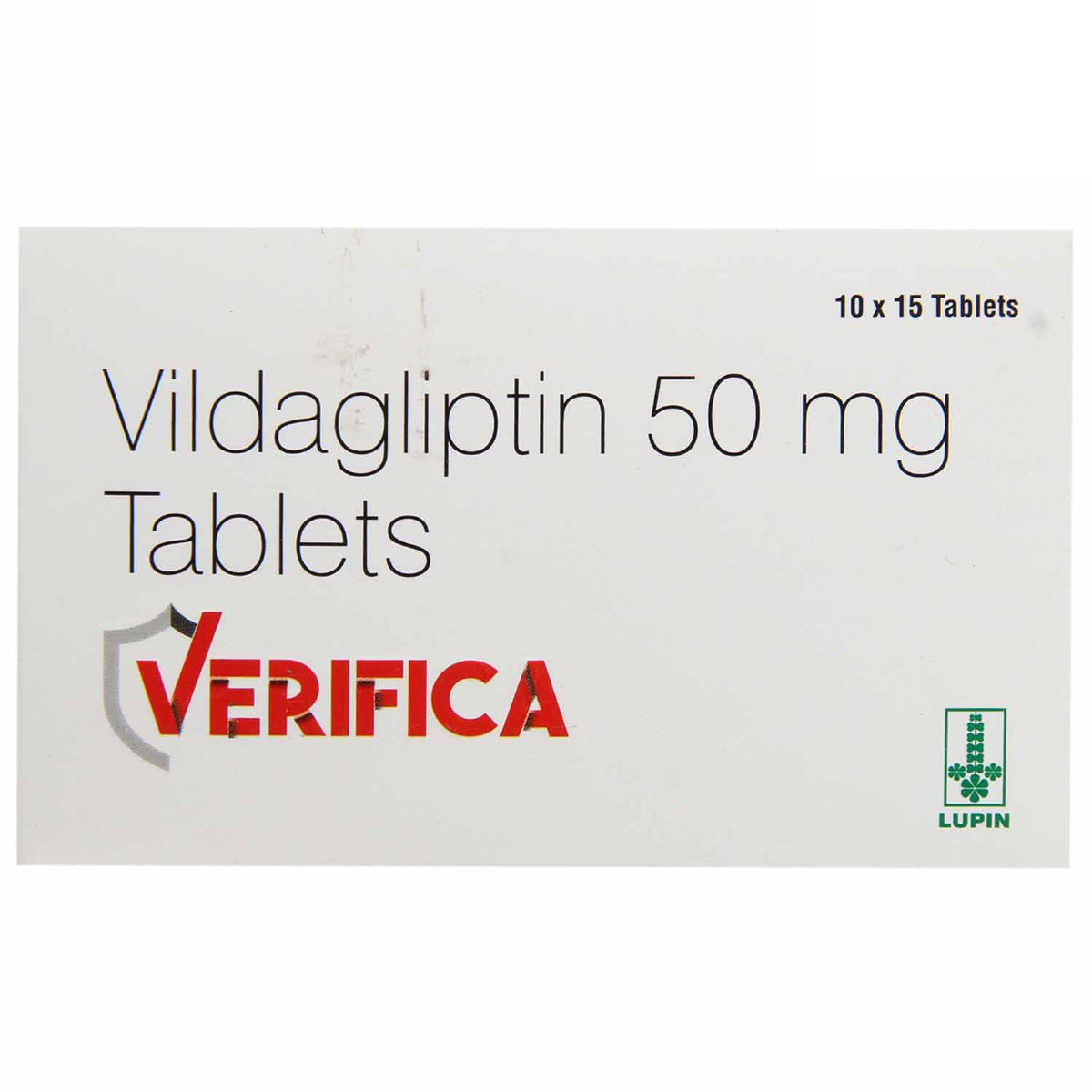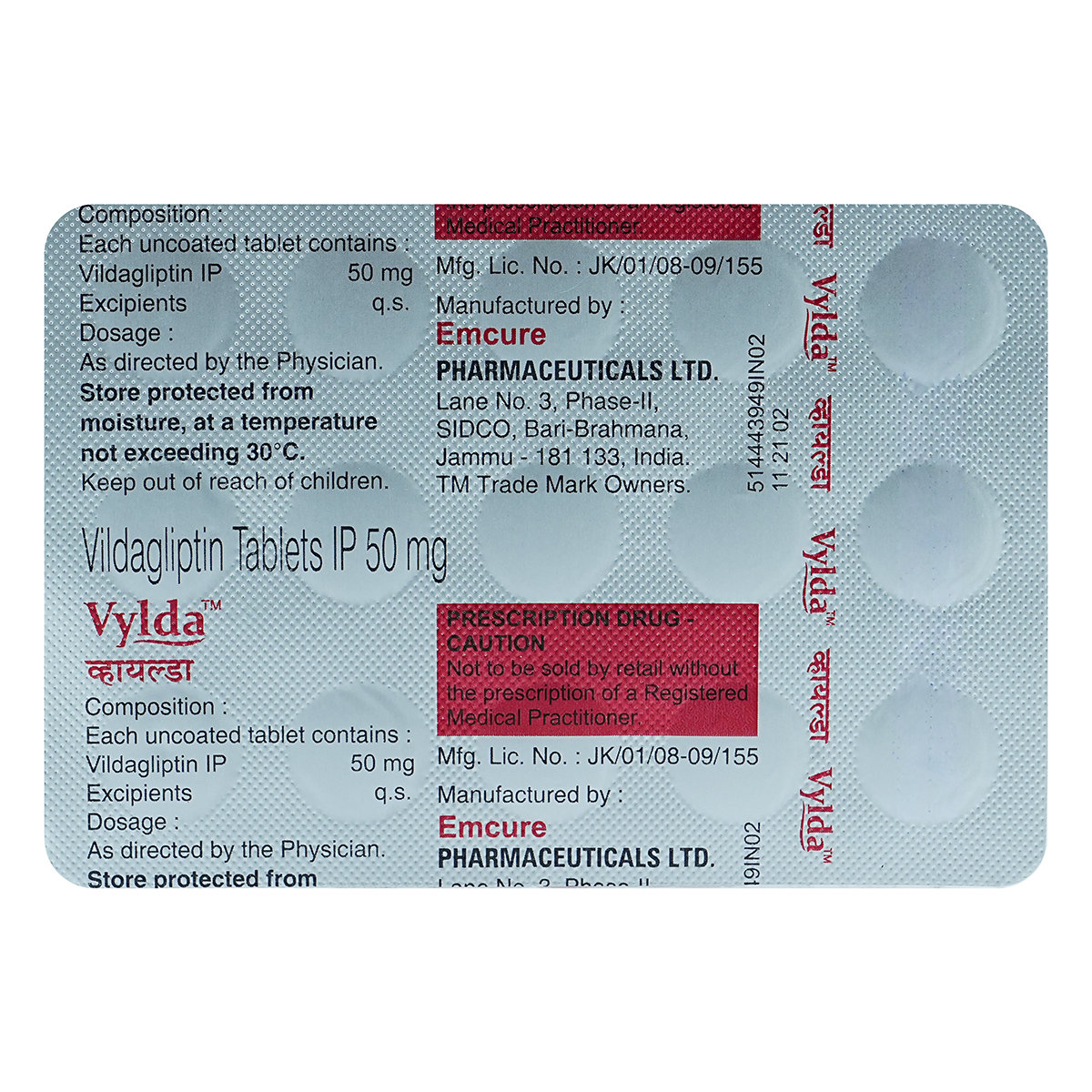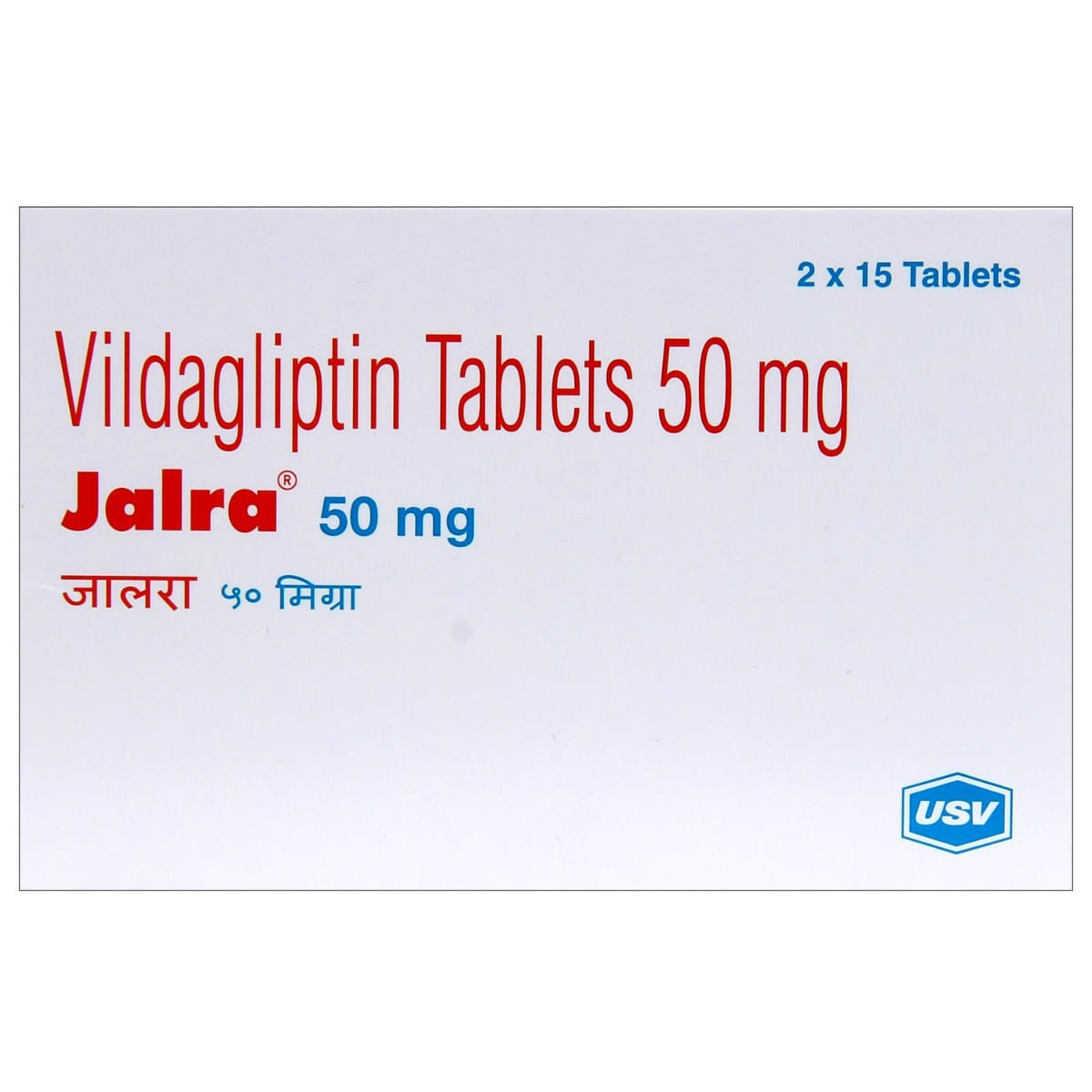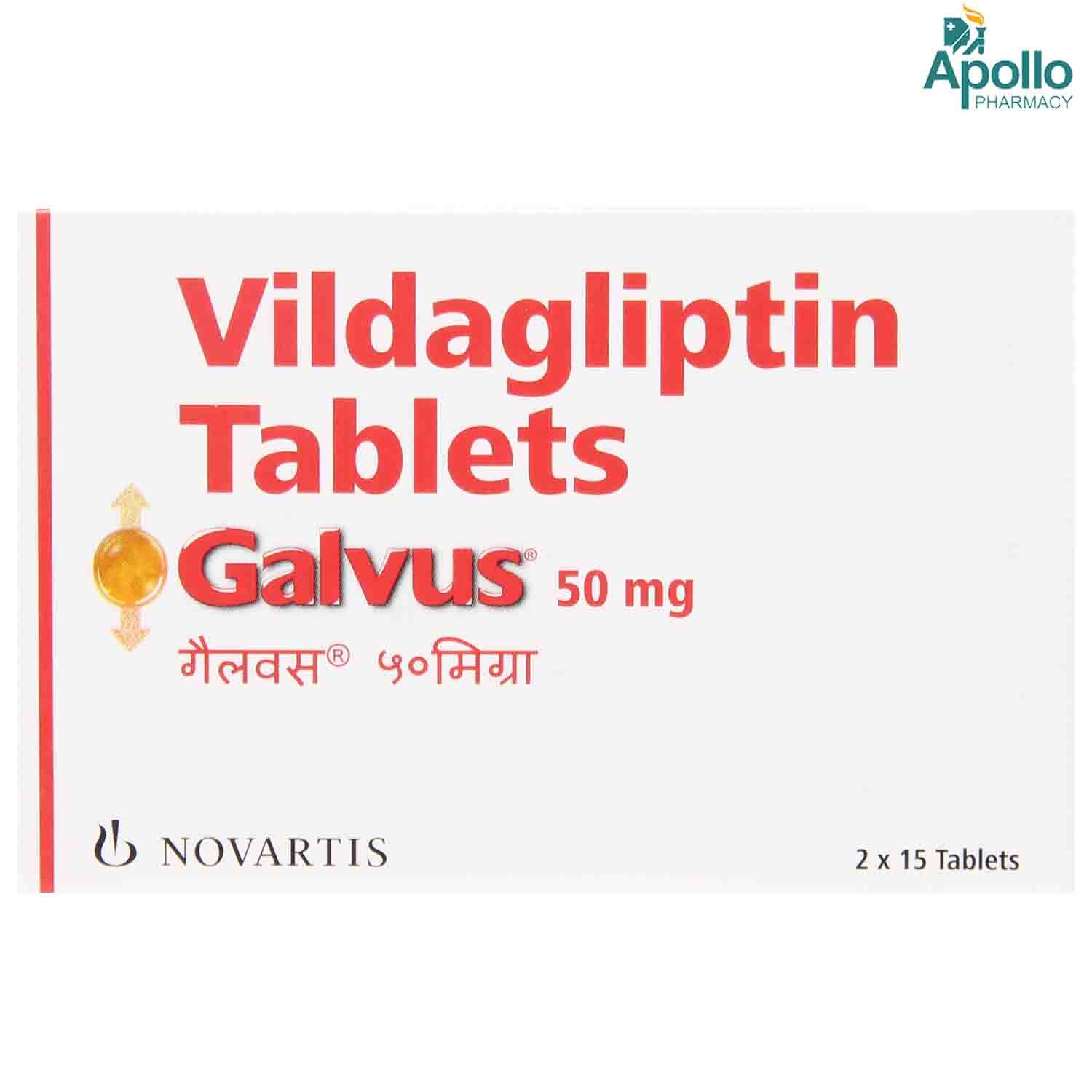Vildalip-50 Tablet 15's


MRP ₹239
(Inclusive of all Taxes)
₹35.9 Cashback (15%)
Provide Delivery Location
Online payment accepted
 Prescription drug
Prescription drugWhats That
Composition :
Manufacturer/Marketer :
Consume Type :
Return Policy :
Expires on or after :
About Vildalip-50 Tablet
Vildalip-50 Tablet belongs to a class of anti-diabetic drugs called 'dipeptidyl peptidase 4 (DPP-4)' inhibitors used in the treatment of type 2 diabetes, especially in patients whose blood sugar levels are not controlled by diet and exercise alone. Vildalip-50 Tablet may be used alone or in combination with other medicines. Type 2 diabetes is a chronic (long-lasting) condition that affects the way our body processes glucose. People with type 2 diabetes either do not produce enough insulin or cannot perform its function in the body (insulin resistance). Middle-aged or older individuals are most likely to suffer from type 2 diabetes, which is also known as adult-onset diabetes.
Vildalip-50 Tablet contains Vildagliptin which works by preventing the breakdown of a chemical messenger called the 'incretin' hormone. This hormone is released after the meal to stimulate the release of insulin from the pancreas. Vildalip-50 Tablet increases the level of 'incretin' hormone so that sufficient insulin can be produced from the pancreas to lower raised blood sugar levels. Thus, Vildalip-50 Tablet helps in controlling blood sugar levels in type 2 diabetes mellitus.
Take Vildalip-50 Tablet as prescribed. Your doctor will advise you how often you take Vildalip-50 Tablet based on your medical condition. You may experience dizziness, nausea, headache, excessive sweating, low blood sugar levels, and trembling in some cases. Most of these side effects of Vildalip-50 Tablet do not require medical attention and gradually resolve over time. However, if the side effects persist or worsen, please consult your doctor.
If you are allergic to Vildalip-50 Tablet or any other medicines, please tell your doctor. Vildalip-50 Tablet is not recommended for children below 18 years of age. If you are pregnant or breastfeeding, or are on dialysis, please inform your doctor before taking Vildalip-50 Tablet . Avoid alcohol consumption with Vildalip-50 Tablet as it may increase or decrease blood sugar levels. Vildalip-50 Tablet is not recommended for patients with diabetic ketoacidosis and type-1 diabetes. If you have type 1 diabetes, diabetic ketoacidosis (excessive levels of blood acids called ketones), or disease of pancreas, kidney, liver, or heart problems, inform your doctor before taking Vildalip-50 Tablet .
Uses of Vildalip-50 Tablet
Directions for Use
Medicinal Benefits
Vildalip-50 Tablet contains Vildagliptin, an anti-diabetic drug used to treat type 2 diabetes, especially in patients whose blood sugar levels are not controlled by diet and exercise alone. Vildalip-50 Tablet prevents the breakdown of incretin hormones, namely: glucagon-like peptide-1 (GLP-1) and glucose-dependent insulinotropic peptide (GIP) that control blood sugar levels. Thereby, increases the levels of these two hormones which are released after a meal. Vildalip-50 Tablet increases insulin production by the pancreas and decreases glucagon production by the liver. Thus, it helps to control blood sugar levels and prevent further complications due to diabetes. Proper diet and regular exercise along with Vildalip-50 Tablet , will give better results.
Storage
- Inform your doctor about the common cold symptoms you're experiencing due to medication.
- Your doctor may adjust your treatment plan, which could include changing your medication, adding new medications, or offering advice on managing your symptoms.
- Practice good hygiene, including frequent handwashing, avoiding close contact with others, and avoiding sharing utensils or personal items.
- Drink plenty of fluids, such as warm water or soup, to help thin out mucus.
- Get plenty of rest and engage in stress-reducing activities to help your body recover. If your symptoms don't subside or worsen, consult your doctor for further guidance.
- Drink warm fluids such as warm water with honey, broth, soup or herbal tea to soothe sore throat.
- Gargle with warm salt water.
- Suck on lozenges to increase the production of saliva and soothe your throat.
- Use a humidifier to soothe sore throat as it adds moisture to the air and makes breathing easier.
- To help reduce symptoms, eat foods high in vitamin C, such as oranges, bell peppers and strawberries.
- Lightly blow your nose to remove mucus; steer clear of blowing hard.
- Infections can be prevented from spreading by washing hands frequently and staying away from other people.
- If you have allergies, do your best to avoid triggering allergens that could contribute to a runny nose.
- Don't smoke, as irritating the nasal passages can make a runny nose worse.
- Inform your doctor immediately if you experience a fever after starting a new medication.
- Your doctor may adjust your medication regimen or dosage as needed to minimize fever symptoms.
- Monitor your body temperature to monitor fever progression.
- Drink plenty of fluids, such as water or electrolyte-rich beverages, to help your body regulate temperature.
- Get plenty of rest and engage in relaxation techniques, such as deep breathing or meditation, to help manage fever symptoms.
- Under the guidance of your doctor, consider taking medication, such as acetaminophen or ibuprofen, to help reduce fever.
- If your fever is extremely high (over 103°F), or if you experience severe symptoms such as confusion, seizures, or difficulty breathing, seek immediate medical attention.
- Inform your doctor about dizziness symptoms. They may adjust your medication regimen or prescribe additional medications to manage symptoms.
- Follow your doctor's instructions for taking medication, and take it at the same time every day to minimize dizziness.
- When standing up, do so slowly and carefully to avoid sudden dizziness.
- Avoid making sudden movements, such as turning or bending quickly, which can exacerbate dizziness.
- Drink plenty of water throughout the day to stay hydrated and help alleviate dizziness symptoms.
- If you're feeling dizzy, sit or lie down and rest until the dizziness passes.
- Track when dizziness occurs and any factors that may trigger it, and share this information with your doctor to help manage symptoms.
- Hydrate your body: Drink enough water to prevent dehydration and headaches.
- Calm Your Mind: Deep breathing and meditation can help you relax and relieve stress.
- Rest and Recharge: Sleep for 7-8 hours to reduce headache triggers.
- Take rest: lie down in a quiet, dark environment.
- Cold or warm compresses can help reduce tension.
- Stay Upright: Maintain good posture to keep symptoms from getting worse.
- To treat headaches naturally, try acupuncture or massage therapy.
- Over-the-counter pain relievers include acetaminophen and ibuprofen.
- Prescription Assistance: Speak with your doctor about more substantial drug alternatives.
- Severe Headaches: Seek emergency medical assistance for sudden, severe headaches.
- Frequent Headaches: If you get reoccurring headaches, consult your doctor.
- Headaches with Symptoms: Seek medical attention if your headaches include fever, disorientation, or weakness.
- Inform your doctor about your constipation symptoms. They may adjust your medication or advise alternative treatments.
- Stay hydrated by drinking sufficient of water (at least 8-10 glasses a day) to help soften stool and promote bowel movements.
- Increase fibre intake by eating foods high in fibre, such as fruits, whole grains, vegetables and legumes, to help bulk up the stool.
- Establish a bowel routine by trying to go to the bathroom at the same time each day to train your bowels.
- Engaging in regular exercise, like walking or yoga, can support in bowel movement stimulation.
- Consult your doctor if constipation persists, and discuss alternative treatments or adjustments to your medication.
Drug Warnings
If you are allergic to Vildalip-50 Tablet or any other medicines, please tell your doctor. Vildalip-50 Tablet is not recommended for children below 18 years of age. If you are pregnant or breastfeeding, or are on dialysis, please inform your doctor before taking Vildalip-50 Tablet . Avoid alcohol consumption with Vildalip-50 Tablet as it may increase or decrease blood sugar levels. Vildalip-50 Tablet is not recommended for patients with diabetic ketoacidosis and type-1 diabetes. Take short, frequent meals and avoid prolonged fasting when taking Vildalip-50 Tablet . Beware of hypoglycemia symptoms (low blood sugar), including sweating, dizziness, palpitations, shivering, intense thirst, dry mouth, dry skin, frequent urination, etc. Whenever you experience any of these symptoms, immediately consume 5-6 candies or 3 glucose biscuits, or 3 teaspoons of honey/sugar, and consult your doctor. Make sure to carry these with you at all times, especially during long travels. If you have type 1 diabetes, diabetic ketoacidosis (excessive levels of blood acids called ketones), or disease of pancreas, kidney, liver, or heart problems, inform your doctor before taking Vildalip-50 Tablet .
Drug-Drug Interactions
Drug-Drug Interactions
Login/Sign Up
Drug-Food Interactions
Drug-Food Interactions
Login/Sign Up
Diet & Lifestyle Advise
- Do regular exercise such as cycling, walking, jogging, dancing, or swimming for a minimum of 30 minutes per day. Invest at least 150 minutes of your week in exercise.
- Maintain healthy body weight as obesity is also related to the onset of diabetes.
- Maintain a low fat and a low sugar diet. Replace carbohydrates-containing foods with whole grains, fruits, and vegetables as carbohydrates turn to sugars leading to high blood sugar.
- Avoid consumption of alcohol and quit smoking.
Side Effects of Vildalip-50 Tablet
- Dizziness
- Nausea
- Headache
- Excessive sweating
- Low blood sugar levels
- Trembling
Habit Forming
Therapeutic Class
All Substitutes & Brand Comparisons
RX
Gliptagreat 50 mg Tablet 15's
Mankind Pharma Pvt Ltd
₹93
(₹5.58 per unit)
61% CHEAPERRX
Torglip 50 Tablet 10's
Torrent Pharmaceuticals Ltd
₹67
(₹6.04 per unit)
57% CHEAPERRX
Vinglyn Tablet 15's
Zydus Healthcare Ltd
₹111.5
(₹6.69 per unit)
53% CHEAPER
Product Substitutes
Author Details
We provide you with authentic, trustworthy and relevant information
Drug-Diseases Interactions
Drug-Diseases Interactions
Login/Sign Up
FAQs
Vildalip-50 Tablet contains Vildagliptin, an anti-diabetic drug that works by preventing the breakdown of incretin hormones, namely: glucagon-like peptide-1 (GLP-1) and glucose-dependent insulinotropic peptide (GIP) that control blood sugar levels. Thereby, it increases the levels of these two hormones. Vildalip-50 Tablet increases insulin production by the pancreas and decreases glucagon production by the liver. Thus, it helps to control blood sugar levels.
Yes, you may take Vildalip-50 Tablet with metformin. However, please consult a doctor before using Vildalip-50 Tablet with other medicines so that the dose may be adjusted appropriately.
Vildalip-50 Tablet should be used with extreme caution in patients suffering from or who have a history of pancreatitis (swelling of the pancreas) as it may increase the risk of recurrent pancreatitis or worsen the condition. However, if you experience any symptoms such as vomiting, stomach pain or nausea, consult a doctor immediately.
Vildalip-50 Tablet alone does not cause low blood sugar levels. However, low blood sugar levels may occur if Vildalip-50 Tablet is taken along with other antidiabetic medicines, alcohol intake, exercise more than usual, delay or miss snacks or meal. However, if you experience any signs of low blood pressure such as dizziness, nausea, light-headedness, dehydration or fainting, please consult a doctor.
No, you are not recommended to stop taking Vildalip-50 Tablet on your own as discontinuing Vildalip-50 Tablet suddenly may cause recurring symptoms or worsen the condition. However, if you experience any difficulty while taking Vildalip-50 Tablet , please consult your doctor so that alternative medicine may be prescribed.
Yes, diabetic skin lesions are common complications of diabetes. However, you are recommended to follow instructions for foot and skincare as advised by your doctor, and if you notice the onset of any new ulcers or blisters while taking Vildalip-50 Tablet , please consult a doctor.
Drug-Drug Interactions Checker List
- ARIPIPRAZOLE
- CLOZAPINE
- DEXAMETHASONE
- PREDNISOLONE
- ACETAZOLAMIDE
- DOPAMINE
- LEVOTHYROXINE SODIUM
- BENDROFLUMETHIAZIDE
Special Advise
Liver function tests are recommended before starting treatment with Vildalip-50 Tablet , at 3 months intervals for the first year and at regular intervals thereafter to monitor the signs of increased liver enzymes.
Disease/Condition Glossary
Type 2 diabetes: It is a chronic (long-lasting) condition that keeps the body away from properly utilizing insulin. Hence, people affected with type 2 diabetes either do not produce enough insulin or are resistant to insulin. Middle-aged or older are most likely to suffer from type 2 diabetes, which is also known as adult-onset diabetes. Type 2 diabetes symptoms include increased thirst, frequent urination at night, slow wound healing, increased hunger, fatigue, and blurred vision. In some cases, there may be weight gain while in rare cases weight loss may be observed. The complication of type 2 diabetes also includes nerve problems, kidney problems, damaged retina of the eyes or blindness, loss of limbs, sexual dysfunction, and an increase in the chance of heart attack or stroke.

Have a query?
Buy best Diabetics products by
Torrent Pharmaceuticals Ltd
Sun Pharmaceutical Industries Ltd
Eris Life Sciences Ltd
Intas Pharmaceuticals Ltd
Lupin Ltd
Micro Labs Ltd
Mankind Pharma Pvt Ltd
Lloyd Healthcare Pvt Ltd
Alkem Laboratories Ltd
Abbott India Ltd
Glenmark Pharmaceuticals Ltd
Cipla Ltd
Macleods Pharmaceuticals Ltd
Wockhardt Ltd
Dr Reddy's Laboratories Ltd
Primus Remedies Pvt Ltd
USV Pvt Ltd
Aristo Pharmaceuticals Pvt Ltd
Emcure Pharmaceuticals Ltd
Alembic Pharmaceuticals Ltd
Ipca Laboratories Ltd
La Renon Healthcare Pvt Ltd
Ajanta Pharma Ltd
Medley Pharmaceuticals Ltd
East West Pharma India Pvt Ltd
Elbrit Life Sciences Pvt Ltd
Corona Remedies Pvt Ltd
Hbc Life Sciences Pvt Ltd
Sinsan Pharmaceuticals Pvt Ltd
Ranmarc Labs
Mitoch Pharma Pvt Ltd
Zydus Healthcare Ltd
Sanofi India Ltd
Akumentis Healthcare Ltd
Fusion Health Care Pvt Ltd
Unison Pharmaceuticals Pvt Ltd
Jubilant Lifesciences Ltd
Novo Nordisk India Pvt Ltd
Tas Med India Pvt Ltd
Blue Cross Laboratories Pvt Ltd
Msn Laboratories Pvt Ltd
Eswar Therapeutics Pvt Ltd
Indoco Remedies Ltd
Q Check Pharmaceuticals
Alteus Biogenics Pvt Ltd
Anthem Bio Pharma
Franco Indian Pharmaceuticals Pvt Ltd
Systopic Laboratories Pvt Ltd
Panacea Biotec Ltd
Zydus Cadila
Biocon Ltd
Edoc Life Sciences Pvt Ltd
Koye Pharmaceuticals Pvt Ltd
Arkas Pharma Pvt Ltd
Diacardus Pharmacy Pvt Ltd
Elinor Pharmaceuticals (P) Ltd
Remedy Life Sciences Pvt Ltd
Saan Labs
Talent India Pvt Ltd
Jarun Pharmaceuticals Pvt Ltd
Capital Pharma
Shrrishti Health Care Products Pvt Ltd
FDC Ltd
Leeford Healthcare Ltd
Nirvana India Pvt Ltd
Elder Pharmaceuticals Ltd
Eli Lilly and Company (India) Pvt Ltd
Glynis Pharmaceuticals Pvt Ltd
Zuventus Healthcare Ltd
Arrient Healthcare Pvt Ltd
Cadomed Pharmaceuticals India Pvt Ltd
Orris Pharmaceuticals
Akesiss Pharma Pvt Ltd
Bal Pharma Ltd
Biochem Pharmaceutical Industries Ltd
Knoll Healthcare Pvt Ltd
Lippon Pharma Pvt Ltd
Morepen Laboratories Ltd
Neucure Lifesciences Pvt Ltd
Opsis Care Lifesciences Pvt Ltd
Wallace Pharmaceuticals Pvt Ltd
Acmedix Pharma Llp
Converge Biotech Pvt Ltd
Erinyle Pharma
Indiabulls Pharmaceuticals Pvt Ltd
Ozone Pharmaceuticals Ltd
Retra Life Science Pvt Ltd
Alvio Pharmaceuticals Pvt Ltd
Geneaid Pharmaceuticals
Heal (India) Laboratories Pvt Ltd
Olcare Laboratories Pvt Ltd
Vasu Organics Pvt Ltd
Kotak Life Sciences
Lakshya Life Sciences Pvt Ltd
Proqol Health Care Pvt Ltd
Sanz Pharmaceuticals
Daylon healthcare pvt Ltd
Mcronus Lifescience Pvt Ltd
Natco Pharma Ltd
Orsim Pharma
Alcohol
Caution
You are recommended to avoid alcohol consumption with Vildalip-50 Tablet as it may cause high or low blood sugar levels.
Pregnancy
Caution
Vildalip-50 Tablet is a Category B pregnancy drug and is generally not recommended for pregnant women. However, please consult a doctor if you are pregnant before taking Vildalip-50 Tablet .
Breast Feeding
Caution
The excretion of Vildalip-50 Tablet in breastmilk is unknown and is not recommended for breastfeeding mothers. Please consult a doctor before using Vildalip-50 Tablet if you are a breastfeeding mother.
Driving
Caution
Vildalip-50 Tablet may cause dizziness in some people. Therefore, avoid driving if you feel dizzy after taking Vildalip-50 Tablet .
Liver
Caution
Take Vildalip-50 Tablet with caution, especially if you have a history of Liver diseases/conditions. The dose may be adjusted by your doctor as required.
Kidney
Caution
Take Vildalip-50 Tablet with caution, especially if you have a history of Kidney diseases/conditions. The dose may be adjusted by your doctor as required.
Children
Unsafe
Vildalip-50 Tablet is not recommended for children below 18 years of age as the safety and effectiveness were not established.




